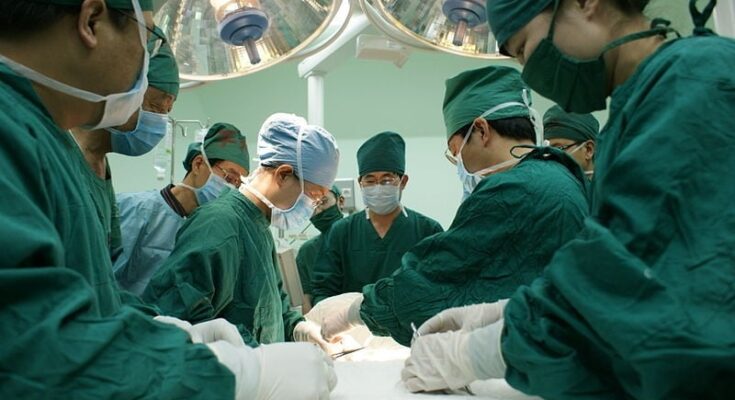
The first heart-lung transplant in Greece on a 52-year-old woman has been successfully completed, the Athens-Macedonian News Agency (AMNA) reports.
A heart-lung transplant is a rare operation and is performed only when both the heart and lungs have irreversibly failed and both organs have to be transplanted simultaneously.
The news of the successful operation was announced by Health Minister Adonis Georgiadis with a detailed post on X (formerly Twitter) on Saturday:
“A few hours ago, the first heart-lung transplant in Greece was successfully completed. This is a 52-year-old woman, mother of a small child, who received the gift of life from a 49-year-old donor from Sotiria Hospital. All links in the transplant chain proved to be durable. The multiple episodes of hemoptysis were treated by the emergency medical system of the hospitals of Thessaly and Attikon Hospital. The woman was under long-term monitoring and administration of specialized interventional therapies in Attikon, [and] the whole procedure of the donor was exemplary at Sotiria Hospital…finally the transplant teams in collaboration with the anesthesiology team of the Onassis Cardiac Surgery Center contributed significantly. Five years ago, this transplant would have been considered unattainable for the Greek health system. We are proud of all our teams and we keep going strong. I wish good recovery to the recipient, warm thanks and gratitude to the donor’s family.”
What is a heart-lung transplant?
According to the US National Library of Medicine, a heart-lung transplant is performed for unsalvageable dual cardiac and pulmonary failure. An organ transplant is an established life-saving therapy for these patients. The most common underlying conditions requiring heart-lung transplants are congenital cardiac diseases with Eisenmenger syndrome and certain pulmonary hypertension disorders.
This activity reviews the evaluation and treatment of dual cardiac and pulmonary failure and highlights the role of the inter-professional team in evaluating and treating this condition.
The heart-lung transplant was pioneered in the 1960s and successfully implemented in the 1980s, with a declining number of candidates since the 1990s. Simultaneous heart and lung transplantation is only indicated for patients in the end stages of both cardiac and pulmonary failure.
If only one of the two thoracic organ systems has irreversibly failed and the other is salvageable, then most treatment centers forego dual transplant, as the risk-benefit analyses suggest salvage should be attempted and only the irreversibly failed organ should be replaced. This strategy spares the patient the cumulative risk of two simultaneous transplants, shortens his or her time on the waiting list, and allocates more organs to more patients.
Therefore, in the current era, most patients are preferentially viewed as candidates for either lung transplant or advanced heart failure therapies, including mechanical circulatory support (MCS) and heart transplant.



